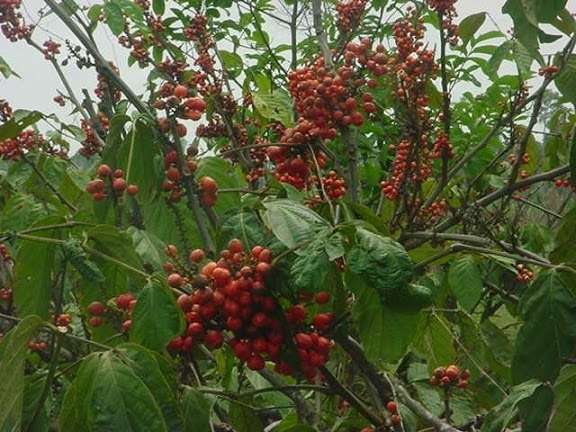Paulinia cupana common name is Guarana. It’s a plant whose seeds and fruits are highly beneficial.
Other species of Paullinia are Paullinia crysan and sorbilis and they’re commonly referred to as, Guarana gum, Brazilian Cocoa, Guarana paste, etc.
Guarana (Paullinia cupana) is cultivated and common in Brazil, the US, Canada, Peru, Mexico, and India for its drink, products, and medicine manufactured for various health problems.
Paraguay has been sighted for producing a series of products from Guarana, however, it seems Guarana is not common in Africa.
The Nature of Guarana
The Guarana plant comes from the Amazon region and is one of the three plants.
Guarana is a vine plant and loves the tropical and subtropical climate.
Guarana is not a tree but more like a shrub that can grow up to 15 meters high.
Especially the young plant of guarana, the branches are lignified, hairy, soft, and Brown.
As the Paullinia cupana becomes older, the the branches become softer.
The leaves of the guarana plant are about 20-35 cm in size and are oblong to oval in shape.
The inflorescences turn beautifully red until the pollen is ripe.
Then, the color becomes bright orange. Now, the plant is also a capsule-like fruit that has a diameter of about 3 cm.
Harvesting and Processing of Paullinia cupana
The guarana plant is not usually grown as a monoculture but grows among a varied plants.
Therefore, it’s not easy harvesting it and it’s very stressful because they must be completed not only on hilly terrain but also on trails.
After the harvest day, the Guarana fruits are filled into bags and stored for 4 to 6 days, then the shell of the cores is dissolved.
During this time, the caffeine content of Guarana fruit increased to about 4 percent.
The fermented Guarana seeds are crushed and the nuclei dissolve completely from the
tray.
After that, the seeds are washed by hand. The bowls floating on the water are siphoned off and can be used as a natural fertilizer.
Now, the Guarana seeds are dried in the Sun. This can be done for a few hours or several days.
The moisture content is only about 7 percent, the cores in a wind tunnel are cleaned once again and are now free of dirt and dust before they are processed into Guarana
powder.
Benefits of Guarana
You might have heard about guarana stimulant. Guarana extracts are used mostly to brew energy drinks and for medicinal purposes.
What the Graviola fruit is popular for is the high content of caffeine that coffee can no longer compete with.
However, Guarana paste is not only a stimulant that is eaten as a substitute for coffee but also used in medicine and a skincare product.
Therefore, the Guarana plant, fruit, and seed extracts are becoming more popular because it’s used for food, drinks and medicine.
The Guarana plant can do so quite more than serve only as a stimulant or to distribute a hangover. The caffeine in guarana fruit is better tolerated in the human body than the caffeine in coffee.
For this reason, Guarana fruit is a better alternative to coffee.








